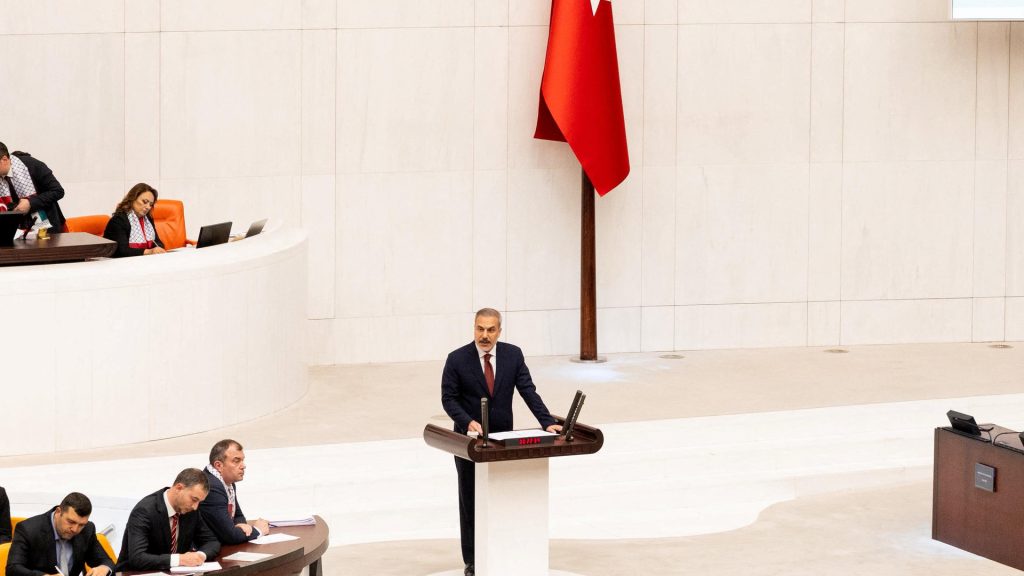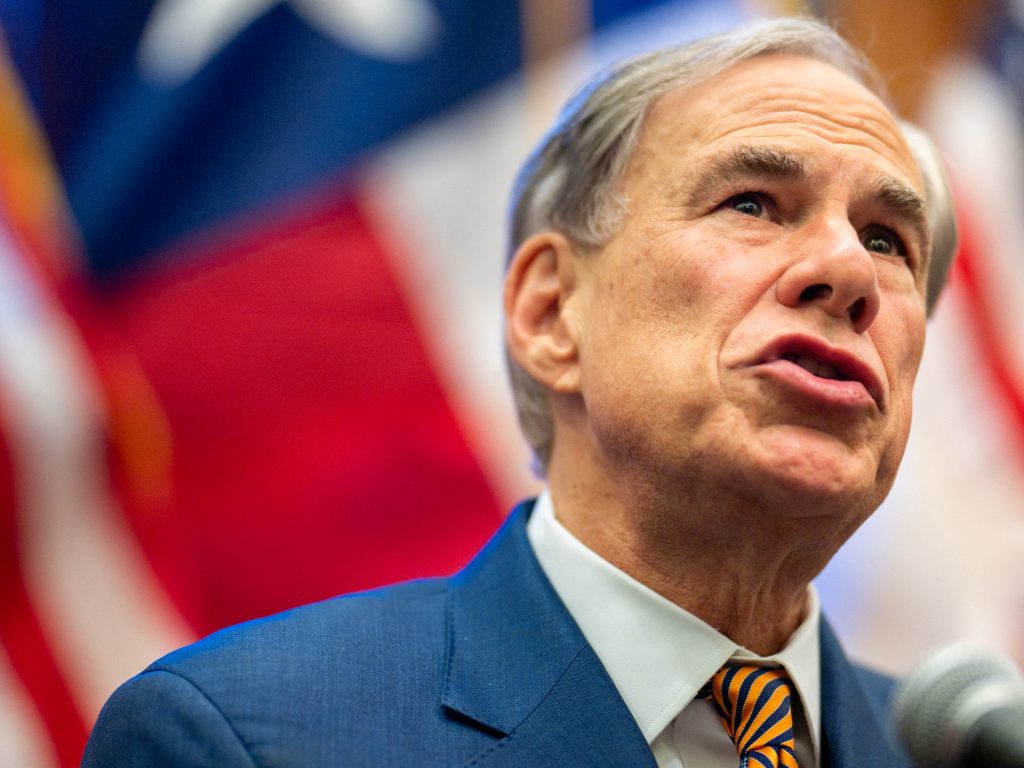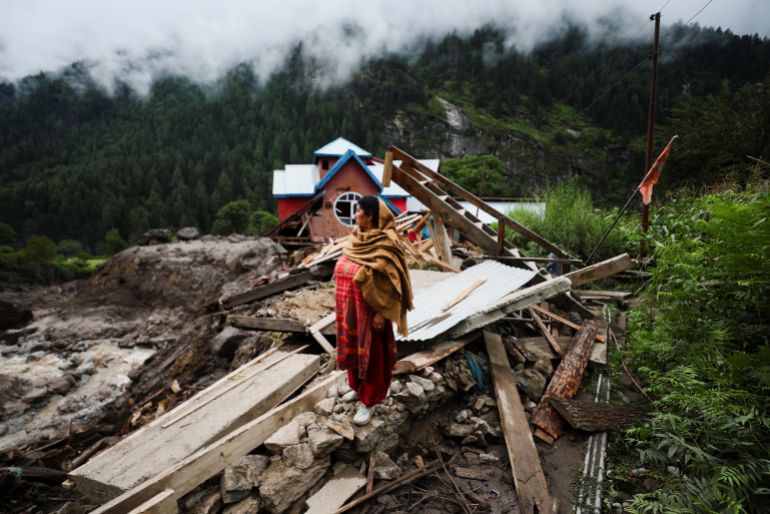India will not ‘bow down’ to US after steep tariffs, trade minister says

Analysts have warned that the 50 percent duty the US has imposed on Indian goods is akin to a trade embargo. Published On 30 Aug 202530 Aug 2025 India will not “bow down” to the United States and will instead turn its attention to attracting new markets, its trade minister has said, in his first public remarks since the US’s stiff 50 percent tariffs on Indian goods took effect. Speaking at a construction industry event in New Delhi on Friday, Piyush Goyal said India was “always ready if anyone wants to have a free trade agreement with us”. But, he added, India “will neither bow down nor ever appear weak”. “We will continue to move together and capture new markets.” The remarks came as the steep tariffs on many Indian imports into the US took effect this week as punishment for New Delhi’s massive purchases of Russian oil, part of US efforts to pressure Moscow into ending its more than three-year war in Ukraine. Since his return to the White House this year, US President Donald Trump has wielded tariffs as a wide-ranging policy tool, with the levies upending global trade. The latest tariff salvo from Trump has strained US-India ties, with New Delhi earlier criticising the levies as “unfair, unjustified and unreasonable”. Trade talks between the two countries have stumbled over agriculture and dairy markets. Trump wants greater US access, while Indian Prime Minister Narendra Modi is determined to shield India’s farmers, a huge voter bloc. The US was India’s top export destination in 2024, with shipments worth $87.3bn. Analysts have cautioned that a 50 percent duty is akin to a trade embargo and is likely to harm smaller firms. Exporters of textiles, seafood and jewellery have already reportedly cancelled US orders amid losses to rivals such as Bangladesh and Vietnam, raising fears of heavy job cuts. Advertisement Goyal said on Friday the government would release several measures in the coming days to support every sector and boost exports. “I can say with confidence that India’s exports this year will exceed 2024-25 numbers.” Meanwhile, days after the US tariffs on India went into effect, the US Court of Appeals for the Federal Circuit in Washington, DC, has largely upheld a May decision that found Trump overstepped his authority in imposing universal tariffs on all US trading partners. Trump had invoked the International Emergency Economic Powers Act to justify the move, claiming that trade deficits with other countries constituted a “national emergency”. But the appeals court questioned that logic in Friday’s decision, ruling overwhelmingly against the blanket tariffs. The Trump administration is expected to appeal to the Supreme Court, and the appeals court therefore said his tariff policy could remain in place until October 14. Adblock test (Why?)
Turkiye to sever economic and trade ties with Israel over Gaza

NewsFeed Turkiye has said that it will completely sever economic and trade ties with Israel and has closed its airspace to its aircraft, amid tensions over the war in Gaza. The Turkish foreign minister said that Israel’s aggressive policies threatened to engulf the region in conflict. Published On 29 Aug 202529 Aug 2025 Adblock test (Why?)
What next for Thailand after court sacks suspended prime minister?

Paetongtarn Shinawatra was dismissed after a leaked phone call scandal. Thailand’s prime minister has been dismissed by the country’s Constitutional Court. Judges ruled Paetongtarn Shinawatra failed to defend the nation’s interests in a leaked phone call with the former leader of Cambodia, Hun Sen. So, what are the consequences of her dismissal? Presenter: Adrian Finighan Guests: Nattakorn Devakula – Independent political commentator and a former television host Titipol Phakdeewanich – Political scientist at the Ubon Ratchathani University Khemthong Tonsakulrungruang – Assistant professor of political science at Chulalongkorn University Published On 29 Aug 202529 Aug 2025 Adblock test (Why?)
Texas Governor Greg Abbott signs Trump-backed redistricting bill

Texas redraw sparks gerrymandering fight nationwide, fueling voter power battles in states across the political divide. Published On 29 Aug 202529 Aug 2025 Texas Governor Greg Abbott has signed into law a bill to redraw the state’s congressional maps at the behest of President Donald Trump in an effort to flip five US House seats held by Democrats to Republicans. The Texas map, drafted in the rare mid-decade redistricting, prompted fierce protests from Democrats and sparked a gerrymandering tug-of-war for voters in states across the country. “Texas is now more red in the United States Congress,” Abbott said in a video post on social media, after signing the bill with a marker. The head of Texas’s Democratic Party criticised Abbott, saying he and Republicans “effectively surrendered Texas to Washington” with the new map. “They love to boast about how ‘Texas Tough’ they are, but when Donald Trump made one call, they bent over backwards to prioritise his politics over Texans,” state Democratic Party Chairman Kendall Scudder said in a statement. “Honestly, it’s pathetic.” The Texas map redraw has already reshaped the 2026 race, with Democratic Rep Lloyd Doggett, the dean of the state’s congressional delegation, announcing that he would not seek reelection to his Austin-based seat if the new map takes effect. Under the proposed map, Doggett’s district would overlap with that of another Democratic incumbent, Rep Greg Casar. California Governor Gavin Newsom, who has emerged as a leading adversary of Trump on redistricting and other issues, tauntingly labelled Abbott on X as the president’s “#1 lapdog” following the signing. Republicans have acknowledged they believe winning more congressional seats in Texas will help the party maintain its slim majority in the US House of Representatives in next year’s midterm elections. More states controlled by Republicans are considering similar action. California and other states where Democrats hold power vow to counter such moves. The California legislature approved a redistricting plan last week aimed at giving Democrats five more congressional seats. Advertisement The California plan must be approved by voters in November. The Texas plan does not need voter approval, but it has been challenged in court. The Texas bill was delayed for two weeks after more than 50 Democratic state House members staged a walkout that denied Republicans the legislative quorum needed. Democrats argued that the new Texas map violates federal law by diluting Hispanic and Black voting power and discriminating based on race. Texas Republicans who sponsored the bill said they redrew maps based on voting history, not race. Most Americans believe redrawing congressional lines for the sake of maximising political gain, known as gerrymandering, is bad for democracy, a Reuters/Ipsos poll found this week. Adblock test (Why?)
Top US senators arrive in Taiwan to discuss security amid China threat

Roger Wicker, head of the powerful Senate Armed Services Committee, says trip is focused on security ties with island. Published On 29 Aug 202529 Aug 2025 Two senior Republican senators known for their strong advocacy on Taiwan have arrived in the island’s capital, Taipei, to discuss security amid a rising military threat from China. US Senator Roger Wicker, chairman of the powerful Senate Armed Services Committee, and Senator Deb Fischer said on Friday their visit was to reinforce and emphasise the “great partnership” between the United States and Taiwan. “We stand here to re-emphasise the partnership and the security, friendship agreement that the United States has had with Taiwan for some decades,” Wicker told reporters ahead of meetings with President William Lai Ching-te and other government officials. The visit comes as the US Senate is due to consider next week the National Defence Authorisation Act, or NDAA, a nearly $1 trillion bill that sets policy for US national defence. Wicker said that this year’s NDAA would “add to the provisions again” when it came to Taiwan, though he gave no details. Before the trip, Senator Fischer issued a statement, saying she looked forward to the visit “to see firsthand how we can strengthen our posture in the region in order to safeguard American interests and our allies”. Fischer is also a member of the powerful Armed Services Committee, which is responsible for legislative oversight of the US military. The Chinese embassy last month urged Wicker and other lawmakers to cancel plans to go to Taiwan. Beijing, which views the island as its own territory, regularly denounces any shows of support for Taipei from Washington. China has increased its military activities around Taiwan in recent years, including staging war games, and Beijing has never renounced the use of force to bring Taiwan under its control. Advertisement The senators’ trip also takes place as some members of Congress – both Republicans and Democrats – have expressed concern that US President Donald Trump is de-emphasising security issues as he works on negotiating a trade deal with China. The Trump administration reportedly denied permission for Taiwan’s Lai to transit in New York as part of a planned official trip to Latin America after Beijing objected. Lai reportedly then cancelled the trip. Administration officials, however, said Trump remains fully committed to Asia Pacific security matters as he pursues his trade agenda as well as a good personal relationship with Chinese President Xi Jinping. The US is Taiwan’s most important international backer and supplier of arms despite the lack of formal diplomatic ties. On Saturday, the US-based Naval News reported that the US is considering new sites in Palau and Australia for stockpiling equipment in the West Pacific to boost its military supply chains and enhance mobility across the Asia Pacific. The US also announced it is rebuilding a dock in Palau, which is one of Taiwan’s closest diplomatic allies. Adblock test (Why?)
‘Everything has been lost’: Kashmir floods, landslides kill dozens

Srinagar, Indian-administered Kashmir — Forty-year-old Ruksana wails as she looks at her home, a desolate one-storey structure stripped of windows and doors next to the raging Tawi river in Jammu’s rundown neighbourhood of Gujar Nagar. A coarse coating of mud drips down the outer walls of the house. “My husband is handicapped, and I have built this home by working at people’s homes,” she wails. “I could only rescue my two children and husband. Everything else, their clothes, their books, food has been lost.” For dozens of families, the loss is even graver. At least 40 people have died and scores have been injured as torrential rains in Indian-administered Kashmir triggered major landslides this week, with flash floods sweeping away homes and knocking down telecommunication networks and powerlines. The majority of those killed were pilgrims travelling to the Vaishno Devi temple in Jammu’s Katra. The shrine, one of the most popular Hindu pilgrimage spots, is located about 60km from Jammu city. Devotees trek about 12–13km uphill from the base camp to reach it. “There was chaos. Death had never seemed [so] close. Some people are still missing,” said Rakesh Kumar, 42, who had come to Katra from Madhya Pradesh, a central Indian state. “The internet and phones were dead, which created a lot of panic.” Jammu recorded its heaviest-ever 24-hour rainfall on Tuesday – 380mm, compared with the previous record of 270.4mm in 1988 – triggering widespread devastation across the region. Some of the deceased pilgrims visiting the Vaishno Devi shrine have been identified as residents of Punjab, Delhi, Rajasthan, Madhya Pradesh, and Uttar Pradesh states. A woman stands in front of houses damaged by the deadly flood caused by sudden, heavy rain in Chasoti town of Kishtwar district, Indian-administered Kashmir, August 15, 2025 [Stringer/Reuters] ‘We hope they are alive’ Mohan Das, another devotee from the state of Uttar Pradesh, said that he was looking for five friends who were missing. “We don’t know where they are. It has been 12 hours since we last saw them,” Das said. Advertisement Jammu abuts the mountains that girdle the Kashmir Valley. The latest crisis came days after a series of flash floods in the remote regions of Kishtwar and Kathua districts killed dozens in Indian-administered Kashmir. The regional administration has set up relief camps and announced compensation for affected families. The region’s Chief Minister Omar Abdullah and the federally appointed Lieutenant Governor Manoj Sinha have toured the worst-hit areas. Prime Minister Narendra Modi has promised the central government’s assistance, and the authorities said they evacuated more than 5,000 people stranded in the floods. In Jammu, the floods surged through the city and swept away bridges on the Tawi, a major lifeline for the region. Images showed policemen in Jammu desperately trying to halt traffic approaching a damaged bridge before a side of it collapsed. Along the steep mountainous routes that trace a winding path through the craggy hills of Jammu, roads caved in under landslides, forcing the only land route from the rest of India to the region to shut temporarily. The Indian government also mobilised a fleet of military transport aircraft to fast-track the delivery of aid and other essential supplies into the region, where air traffic was closed on Tuesday before operations resumed the following day. India’s National Disaster Response Force (NDRF) and police personnel carry a dead body on a stretcher during rescue operations after flash floods in Chasoti village, Kishtwar district, Indian-administered-Kashmir, Saturday, August 16, 2025 [Channi Anand/AP Photo] ‘Waters close in on Kashmir’ Bashash Mahmood, 23, a university law student, was abruptly awakened by a midnight call while sleeping at his hotel in Srinagar. On the line was his cousin, calling from Anantnag—58 kilometres away. Floodwaters on Wednesday knocked down mobile and electricity towers and severed optical fibre cables, crippling the region’s entire telecommunications infrastructure. So Bashash could only hear a jumble of crackling words as he tried to make sense of what his cousin was saying. He finally managed to catch an urgent SOS message: floodwaters had surged outside his home in Bijbehara, Anantnag, and his family was in danger. He took his car and raced along empty roads in the middle of the night, past the Indian army garrison at Badambagh, and through the sprawling saffron fields of Pampore. When he arrived at Sangam, a canyon where two major rivers in Anantnag join, he rolled down his windows, the rain pelting against his face. “I realised that water had risen dangerously close to the embankment.” Advertisement Once he reached home, Bashash got to work and carried household items such as a fridge, furniture and utensils to the second storey of their house, emptying the ground floor. In the morning, videos went viral showing people paddling rafts through the streets, as water had submerged large parts of South Kashmir, especially Anantnag district. In Srinagar, the region’s biggest city, panic reached a crescendo on Wednesday afternoon – reinforced by public memories of apocalyptic floods that had struck in 2014. Back then, floodwaters from swollen rivers had breached the banks, burying large parts of the Kashmir valley. As Bashash recalls, when the waters finally receded 11 years ago, the floods had left two feet of sludge residue that locals scooped up with their bare hands before cleaning their homes to make them livable again. “Just the thought of how hard it was for us to defecate terrifies me. We would rather refuse to eat anything to get ourselves constipated because there were no toilets,” he says. Haunted by those memories, residents across Kashmir were seen assembling sandbags and plugging gaps to prevent breaches through which the swelling river might come. If it was the Tawi in Jammu, it was the Jhelum river – also a lifeline-turned-threat – that poses the danger in Kashmir. The river crisscrosses its way through the entire length of the Kashmir valley before crossing over into Pakistan. The floods have revived memories of the devastating floods of 2014. Here, a Kashmiri man rows
Microsoft fires four workers over protests against firm’s ties to Israel

Microsoft says the terminations followed serious breaches of company policies amid claims that its software is used by Israeli army in Gaza. Published On 29 Aug 202529 Aug 2025 Microsoft has fired four employees who participated in protests on company premises over the firm’s ties to Israel, including two who took part in a sit-in this week at the office of the company’s president. Anna Hattle and Riki Fameli received voicemails informing them that they were fired, the protest group No Azure for Apartheid said in a statement on Wednesday. It added on Thursday that two more workers, Nisreen Jaradat and Julius Shan, were also sacked. They were among demonstrators who had recently set up encampments at Microsoft headquarters to protest against the company’s support for Israel as it wages its war on Gaza. Microsoft said the terminations followed serious breaches of company policies. In its statement on Thursday, it said recent on-site demonstrations had “created significant safety concerns”. No Azure for Apartheid, whose name references Microsoft’s Azure software, has demanded that the company cut its ties to Israel and pay reparations to Palestinians. “We are here because Microsoft continues to provide Israel with the tools it needs to commit genocide while gaslighting and misdirecting its own workers about this reality,” Hattle said in a statement. Hattle and Fameli were among seven protesters who were arrested on Tuesday after occupying the office of company President Brad Smith. The other five were former Microsoft workers and people outside the company. Smith has said Microsoft respected “freedom of expression that everyone in this country enjoys as long as they do it lawfully”. Claims on Microsoft’s Azure app A joint media investigation published this month found that an Israeli military surveillance agency was making use of Microsoft’s Azure software to store a large volume of recordings of mobile phone calls made by Palestinians living in the Israeli-occupied West Bank and Gaza. Advertisement The investigation, conducted by The Guardian, +972 Magazine and Hebrew-language outlet Local Call, said Israel relied on Microsoft cloud for expansive surveillance of Palestinians. In response, Microsoft said it was turning to law firm Covington & Burling LLP to conduct a review. Other Microsoft workers have also protested against the company’s ties to Israel. In April, Microsoft AI CEO Mustafa Suleyman’s remarks were interrupted by an employee who protested against the firm’s ties with Israel during the technology company’s 50th anniversary celebration. That employee and another protesting employee were also subsequently fired. Firms and educational institutions have faced protests over ties with Israel as the humanitarian crisis in Gaza from Israel’s military assault has mounted, and images of starving Palestinians, including children, have caused global outrage. Israel has killed tens of thousands of Palestinians, caused a famine and forced the displacement of almost all of Gaza’s population since it launched its war in October 2023. Adblock test (Why?)
Elderly Palestinians starving to death under Israeli-made famine in Gaza
[unable to retrieve full-text content] An increasing number of elderly Palestinians in Gaza are dying due to the Israeli-made famine there.
UN chief slams Israel for ‘deliberate’ Gaza ‘catastrophe’

NewsFeed UN Chief Antonio Guterres accused Israel of making ‘deliberate decisions that defy basic humanity,’ saying these had produced catastrophic results in Gaza. He warned that famine was no longer a looming possibility but a present-day catastrophe. Published On 28 Aug 202528 Aug 2025 Adblock test (Why?)
Israel steps up bombardment of Gaza City, killing at least 24 people

Published On 28 Aug 202528 Aug 2025 At least 24 people have been killed in Israeli attacks across Gaza since dawn on Thursday, including 12 aid seekers, medical sources told Al Jazeera, as residents report intensified military bombardment of the eastern and southern neighbourhoods of Gaza City. The Israeli military has been preparing to take Gaza City, the enclave’s largest urban centre, despite international calls to reconsider the move over fears that the operation would cause significant casualties and displace the roughly one million Palestinians sheltering there. United Nations Secretary-General Antonio Guterres was among those criticising the campaign, saying on Thursday that it “signals a new and dangerous phase” in the war. “Expanded military operations in Gaza City will have devastating consequences. Hundreds of thousands of civilians, already exhausted and traumatised, would be forced to flee yet again, pushing families into even deeper peril,” he said. “This must stop,” he said. In Gaza City, residents said families were fleeing their homes and most were heading towards the coast as Israeli forces bombarded the Shujayea, Zeitoun and Sabra neighbourhoods. No buildings remain standing in the southern part of Zeitoun as the Israeli ground operation has demolished more than 1,500 homes, according to Gaza’s Civil Defence agency. Israeli officials have described Gaza City as the last stronghold of Hamas. ‘Enforced disappearances’ The Israeli military said in a statement that it was continuing to operate throughout Gaza to target fighters and their infrastructure. Advertisement The military said on Thursday that it had killed three fighters in the past day without saying how it had identified the individuals. The Palestinian news agency Wafa reported that those killed across Gaza on Thursday included a woman and her child sheltering in a tent camp for displaced people in Khan Younis. Meanwhile, UN rights experts voiced alarm at reports of “enforced disappearances” of starving Palestinians seeking food at distribution sites run by the US- and Israeli-backed GHF, urging Israel to end the “heinous crime”. The seven independent experts said in a joint statement they had received reports that a number of individuals, including one child, had been “forcibly disappeared” after going to aid distribution sites in Rafah in southern Gaza. “Reports of enforced disappearances targeting starving civilians seeking their basic right to food is not only shocking, but amounts to torture,” said the experts, who are mandated by the UN Human Rights Council but who do not speak on behalf of the UN itself. “Using food as a tool to conduct targeted and mass disappearances needs to end now.” In response, the GHF said it had found no evidence of “enforced disappearances” at its aid sites. According to the AFP news agency, the GHF said in response to the experts’ statement: “We operate in a war zone where serious allegations exist against all parties operating outside our sites. But inside GHF facilities, there is no evidence of enforced disappearances.” New famine deaths With the enclave in the grips of a humanitarian crisis, the Gaza Ministry of Health also said on Thursday that four more people, including two children, had died of malnutrition and starvation in the enclave, raising hunger-related deaths to 317 people, including 121 children, since the war started. “The scene on the ground is quite heartbreaking,” Al Jazeera’s Tareq Abu Azzoum reported from Deir el-Balah in central Gaza. “Families are still lining up in front of soup kitchens for hours under the scorching heat, often to return to their temporary shelters empty-handed,” he said. “Others are risking their lives to travel to distribution points to seek food aid.” Israel’s military campaign has devastated the territory and displaced most of the roughly two million Palestinians there. It started after Hamas’s October 2023 attacks on Israel, which killed 1,139 people with another 251 taken captive. Most of the captives have since been released through diplomatic negotiations although 50 remain in Gaza, of whom 20 are said to be alive. Advertisement Israel, meanwhile, has not responded publicly to Hamas’s acceptance of a proposal for a ceasefire that would allow the return of some of the captives. Israeli officials have, however, insisted that they would only accept a deal that sees all of the captives released and Hamas’s surrender. More than 62,900 Palestinians, most of them women and children, have been killed by the Israeli military in Gaza, according to local health officials. Adblock test (Why?)

